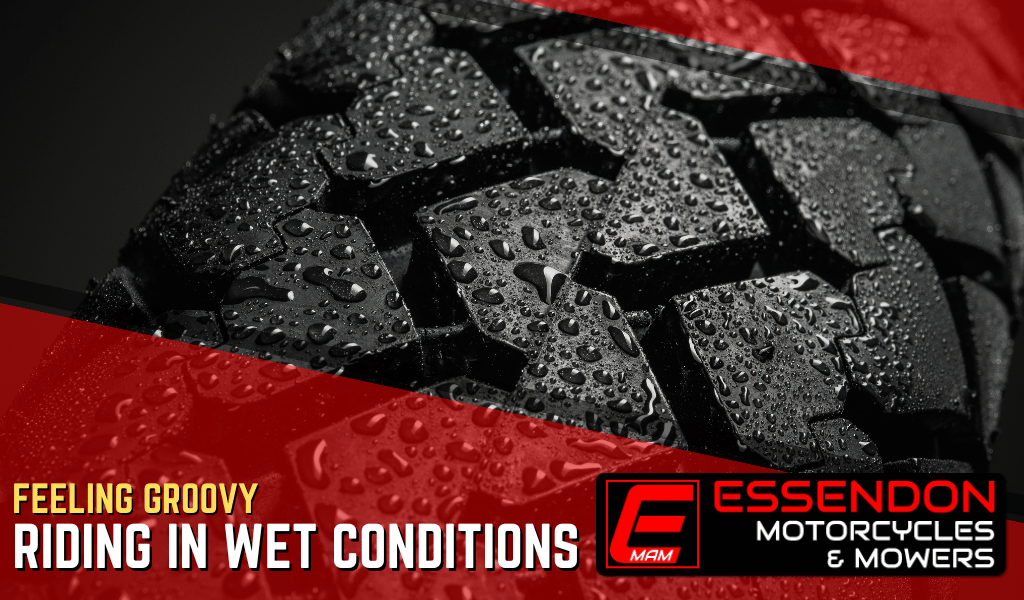Why Threads and Grooves Are Vital to Safe Riding in Wet Conditions!
Motorcycle legend Kevin Schwantz, who opened our store in Melbourne many years ago when he was 500cc World Champion, once remarked that the best tyres to run in the wet were properly warmed up slicks. That may have worked well for him, but the rest of us are going to rely on threaded grooves on our tyres at some point in our riding career. But what do these grooves do and why are they important?
Wet and wild
All road tyres and almost all off road tyres rely on some sort of thread pattern to clear water and allow the bike to perform on a wet surface. Without being able to clear the way, the rubber would simply operate on a film of water. The resulting failure to grip is referred to as aquaplaning, and this usually ends badly for both the bike and rider, with loss of control creating enough unpleasantness to make an atheist pray. Staying upright while experiencing such a loss of control tends to be a lot more about luck than skill for most of us.
Take a bow
This kind of catastrophe is, thankfully, no longer necessary thanks to the way modern tyres are constructed. The front has a naturally oval shape with grooves, which are designed to disperse the water to either side. The front can be seen as being similar to the bow of a boat in the way it moves the water that sits on the surface of a wet road. This has the effect of clearing the path for the rear wheel, which needs all the help it can get to ensure that it delivers the power to the road, and not contribute to a loss of traction.
Block party
The grooves create thread blocks – most obvious on off road tyres which, thanks to their size and shape, are known as knobblies. The thread blocks are traditionally where the tyre works hardest as turning, accelerating and stopping puts pressure on the leading edge of these blocks. They are also the source of tyre noise.
To reduce both of these as issues, the angle of the thread is worked on by the manufacturer to minimise wear and lower noise. While fewer blocks mean less destructive pressure is generated, less water is cleared. The solution is to use ‘sipes’. These are channels between the blocks that close under pressure and allow the rubber to operate as an unbroken area.
Pressure points
The technology that goes into making sure that the tyre performs as we’d like it to relies heavily on being maintained at the correct pressure (link to blog on tyre pressure). The sipes simply won’t work on an under-inflated tyre and wear rate will be much more severe on the edges of the blocks. New technology also allows the tyre to wear at a much more consistent rate. Michelin’s Pilot Road 4 tyres are a great example of such new technology in action.
So, if your riding style is a little less ‘do or die’ than Mr Schwantz, you’ll look to the cleverer road-oriented threaded cuts on your tyres. Even if you never ride in the wet, a burst water main or fire hydrant is all it’ll take to have a decent set of Bridgestones, Michelins, Dunlops or Pirellis earn their keep.
To find out more about Essendon Motorcycles & Mowers and our services please contact us directly on (03) 9351 0055 or check out our website!

